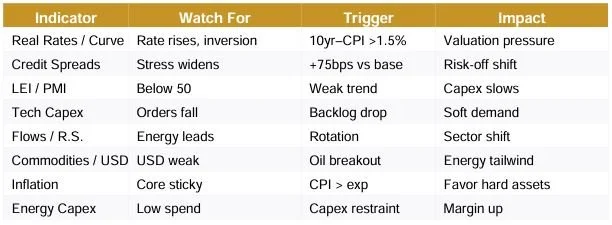
NEWS & RESOURCES

Proceeding with Care — Normal Market
We continue to base our core positioning on innovation, secular growth, and technology leadership, but we enter a more vigilant phase of the cycle. We believe the macro regime remains constructive enough to reward a tilt toward technology and information services—yet vigilance is warranted.

Harvest Portfolio Management — Strategic Commodities Note / October 2025
China’s recent escalation of rare-earth export controls underscores its dominance in global technology and defense supply chains. The United States and its allies are accelerating efforts to secure mine-to-magnet capacity, yet remain dependent on China for several heavy rare earths.

Second Half – 2025 Investment Strategy
“Don’t fight the Fed, and don’t fight the tape” were truisms that guided my early investment career at Kidder Peabody & Co. in the mid-1980s.
